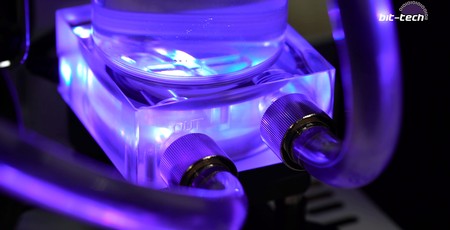
Performance Analysis
Whereas the fans on the comparison kit from Thermaltake can be powered with 5V and 7V, the EK ones are 12V only. This means we had to switch to manual PWM adjustments to adjust their speed, which you can do using the Asus Fan Xpert software. We chose values of 58 percent and 41 percent to most closely represent 7V and 5V respectively, though even these should not be taken as direct comparisons. After all, we're using different fans with different RPM curves and noise outputs. The focus is on seeing how the kit responds when the fan speed and/or airflow is limited, and a difference in the results of a few degrees Celsius is nothing to worry about, especially as we're comparing difference over ambient and are unable to test in a temperature-controlled environment.
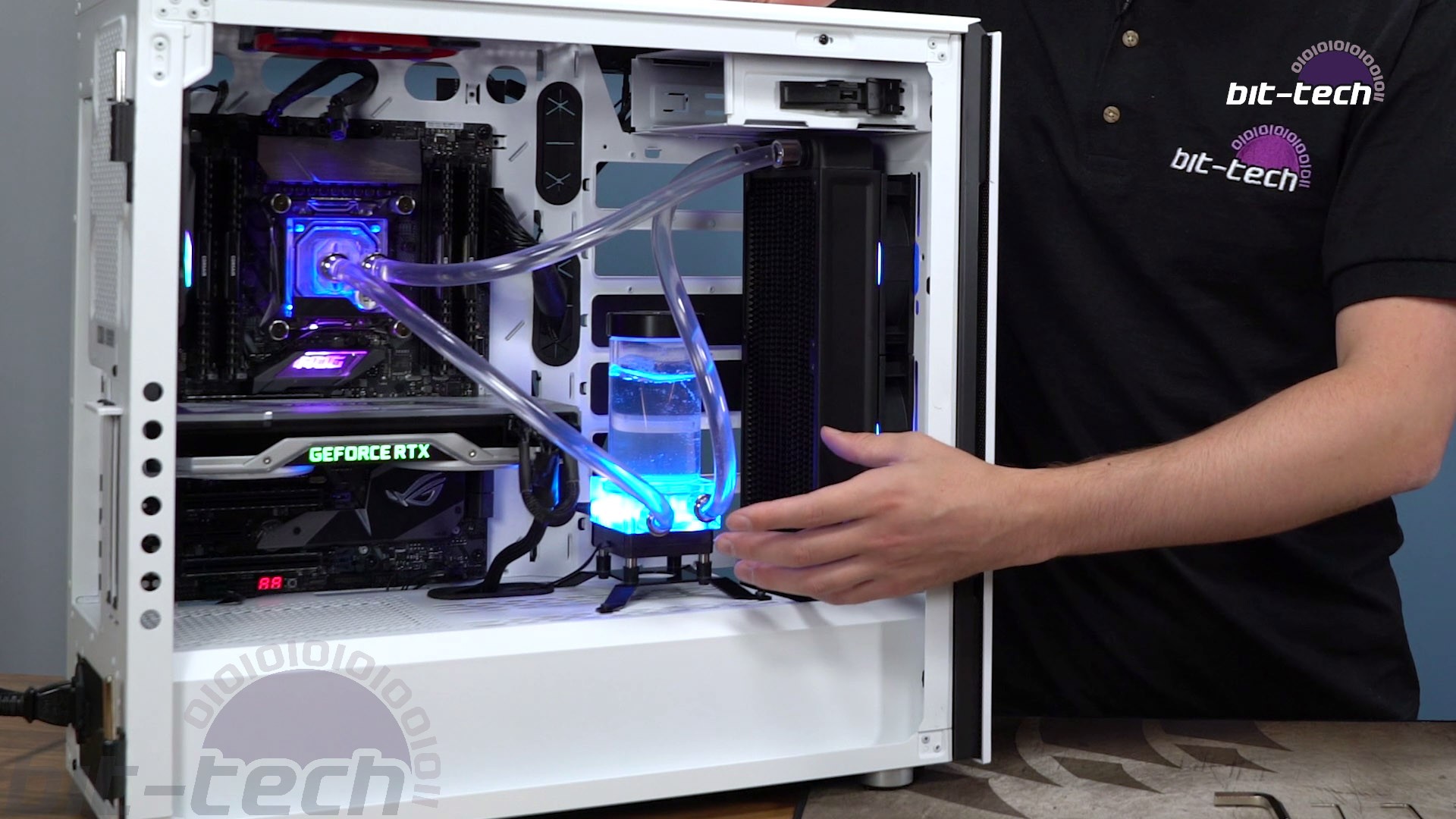
In the best-case scenario (full speed fans, front door open), the EK kit has a delta T on par with the very best you can get from all-in-one coolers running at full pelt. The result of 58°C is a little behind the Thermaltake but not by anything too meaningful, although we were still expecting performance parity. There certainly doesn’t appear to be anything untoward here, but neither does the EK kit outshine the competitor.
Reducing airflow with a 58 percent PWM value has a very similar effect as on the Thermaltake kit, which again is a few degrees cooler, and the delta T value rises by 6°C. Another 7°C is added to the result when running at 41 percent PWM. At this point, the CPU is approaching its thermal throttling point, but it's still more than 10°C away. Given how demanding the CPU and overclock we use is, this means that you can safely run the fans on this kit at low noise levels without worrying about downclocking on pretty much any CPU, and there's a wide range of fan speed/noise available when determining the balance that best suits your own setup.
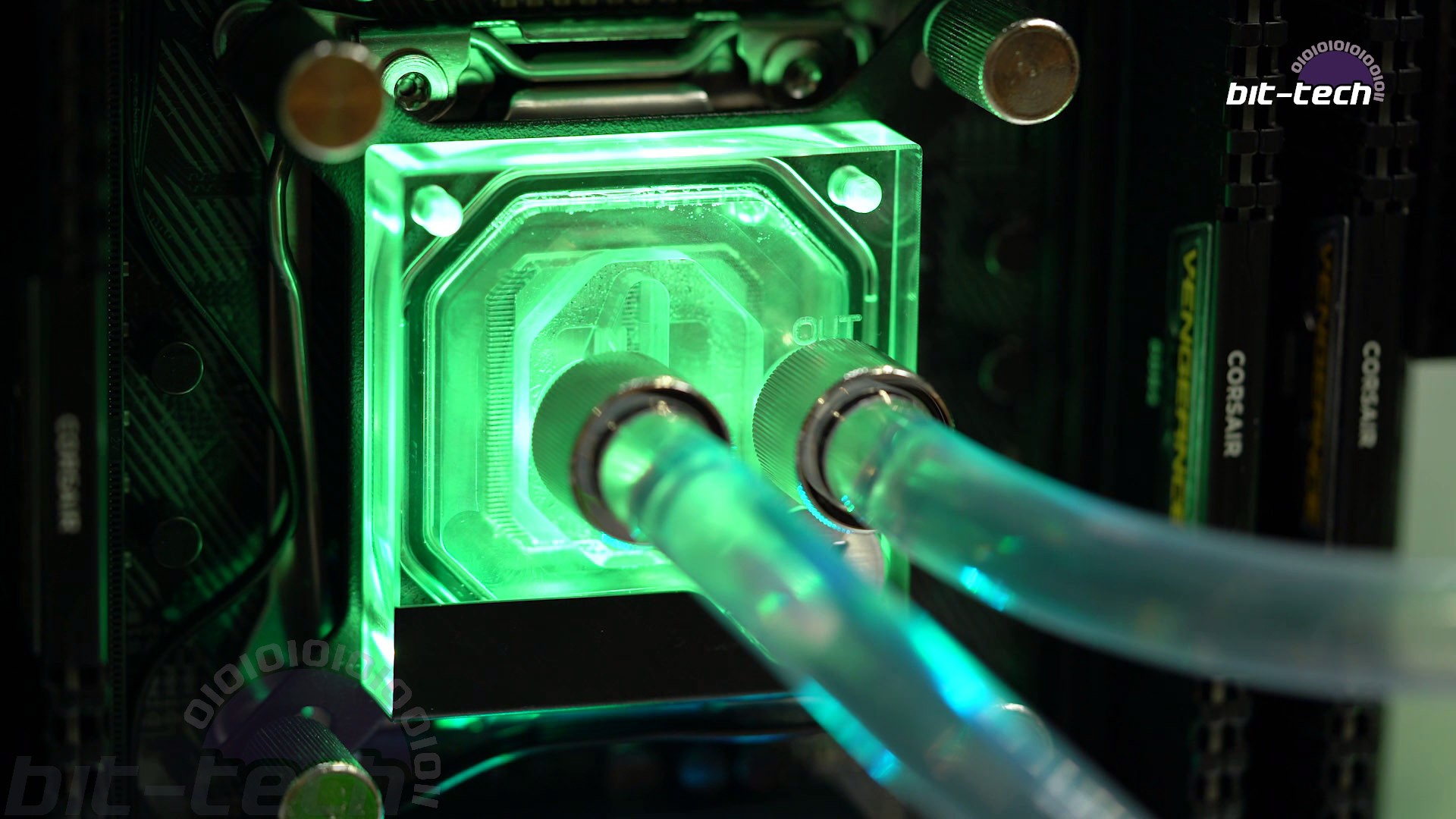
Of course, the above only holds true if your chassis has good airflow. With the door on our Corsair Carbide 678C closed to simulate a highly restricted airflow environment, we now need full speed fans to keep the same level of performance as 41 percent PWM with the doors open, highlighting again the importance of airflow even when water-cooling. Interestingly, when comparing the two kits, the balance swings in EK’s favour here, as the Thermaltake kit in a similar situation is 5°C warmer once ambient is accounted for, suggesting EK’s fans have the upper hand when it comes to static pressure. This isn't conclusive, but it's definitely worth considering if you're installing the radiator behind a front panel with a solid fascia that only has ventilation down the sides and/or underneath, for example.
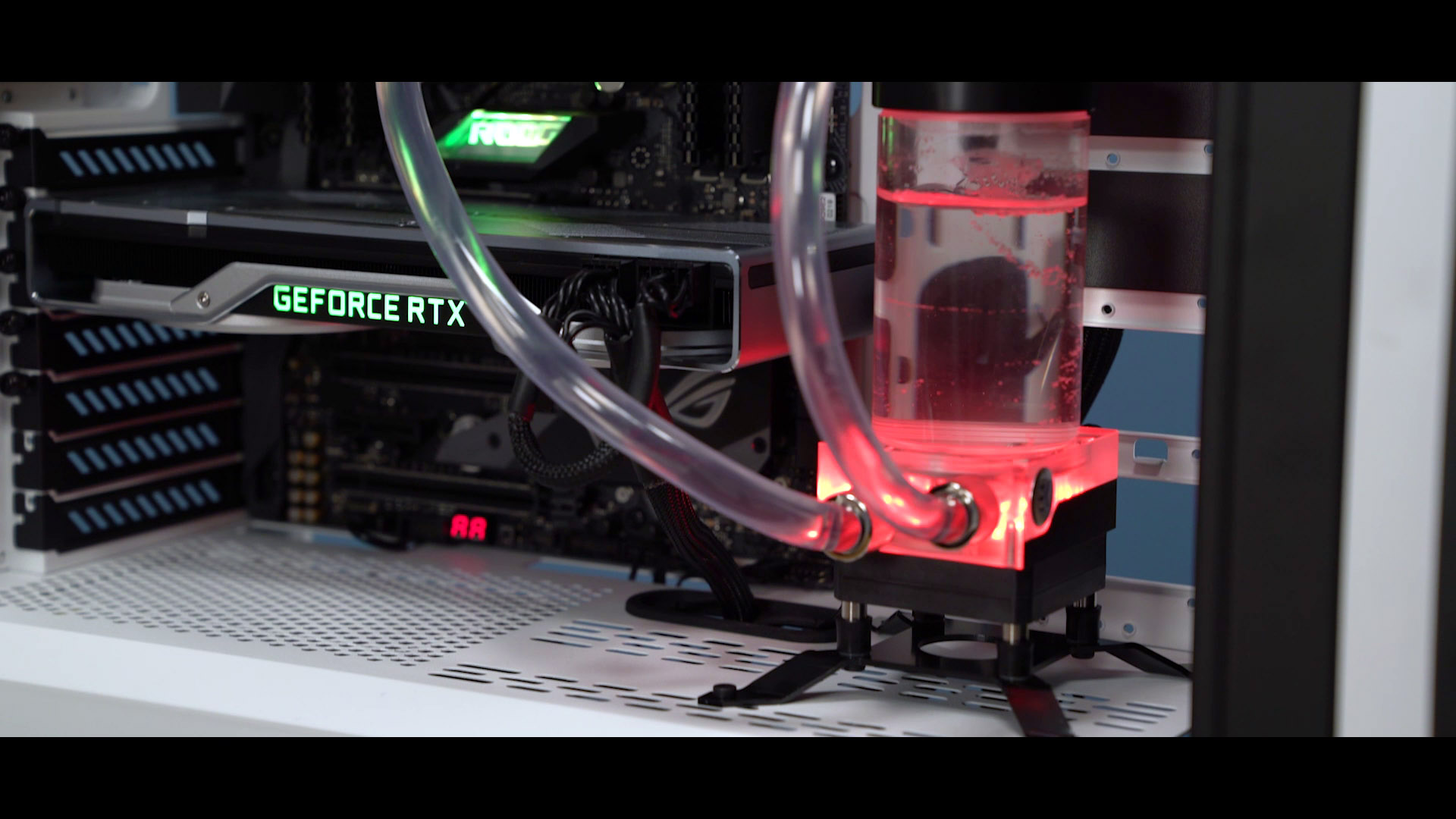
Finally, as with Thermaltake, a low-noise setting for the fans in a restricted-airflow environment sees the limit of the kit reached, and the CPU quickly hits Tj Max and throttles down. If you want to run the fans quietly, ensure you have sufficient airflow first.
At full speed, the fans are obvious and noticeable in terms of noise, but limiting the PWM value is a very effective way of dealing with this. The pump, meanwhile, was almost entirely silent in operation at full, so honestly we'd be tempted just to leave it on SATA power.
Conclusion
In terms of the installation process, this kit is a bit of a mixed bag. Some of the parts are really easy as you would expect, but a few more optional extras like a pair of 90° angled adaptors, a reservoir clip mount, and a fill bottle (and by extension an Allen key for the fill port) would have made everything leagues better. Coolant concentrate is fine by us, but just remember to pick up some distilled water before assembly. The RGB implementation across the board is rather nice, even if it's not digital. The pump RGB in particular looked rather good, and we like how the LEDs are in the base rather than on a cap like you'll find on the Thermaltake and Corsair RGB reservoirs.
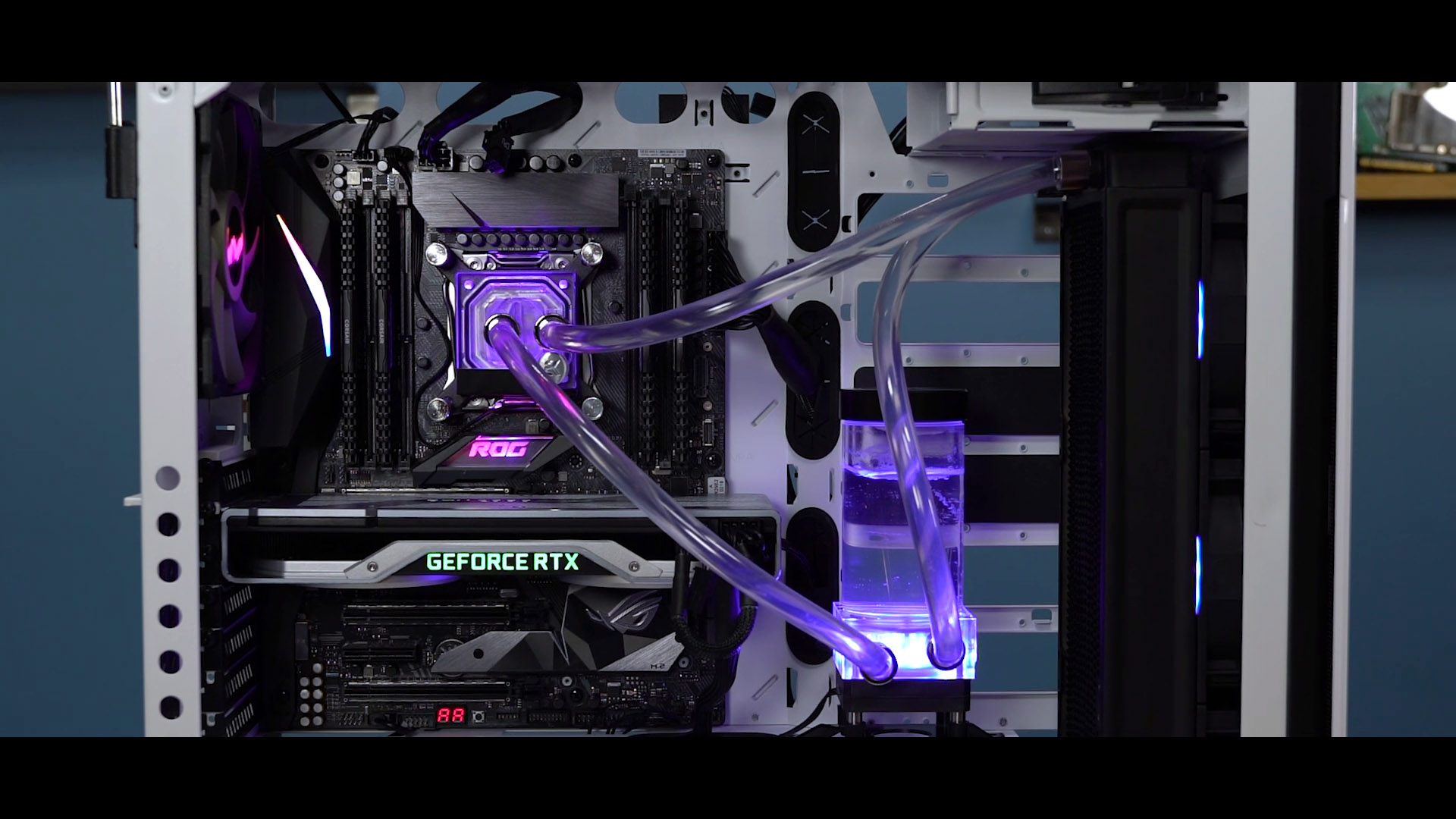
The pump, however, definitely didn't light our fire. It had trouble pushing out all the air quickly from the radiator, which doesn't fill us with great hopes for adding more radiators and blocks to a loop. Sure, it didn't seem to hamper performance, but then pump speed doesn't tend to affect things a whole lot. Unfortunately, only EK can comment on the reliability and capability of the included SPC pump. While we doubt it would have chosen a dud, it's definitely more comforting having a regular DDC or D5 present. Other kits from EKWB do of course come with those pumps, but you're then looking at a higher price point to match.
Ultimately, this kit ends up sitting in a slightly odd place, and we feel it's a tad too expensive for what it is. EK has priced it to be essentially the same price as purchasing the components individually, so really you're just picking one up for convenience. That does mean you could potentially choose all the same pieces and add a beefier pump/res combo without losing out at all - food for thought. The thing is, if you consider that the parts are made in China, it means Barrow and Bykski are potential competitors. It's more than possible to make a similar parts list to this kit that contains a Lowara/Laing D5 pump for £270 (including UK delivery) on AliExpress in the FormulaMod store, so we'd like to see EK really crank that value-o-meter as a further incentive for those looking to make their first steps into water-cooling.
Update 18/10/2019: EKWB has been in touch to say it is 'grateful for the feedback' and that it is now working on 'addressing the issues' highlighted in the review.

MSI MPG Velox 100R Chassis Review
October 14 2021 | 15:04

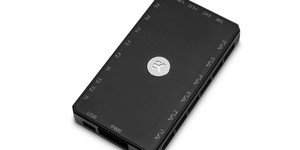
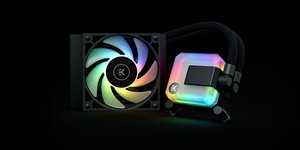
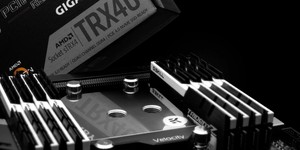




Want to comment? Please log in.